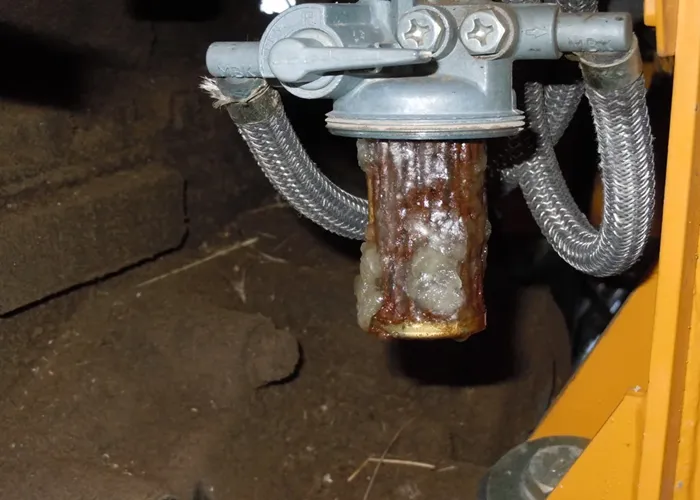Diesel fuel is essential for powering various vehicles and machinery. However, in cold temperatures, diesel can undergo a phenomenon known as “gelling,” where the fuel thickens and becomes less fluid. This issue can lead to engine performance problems, including difficulty starting and potential damage. Understanding the causes of diesel gelling and implementing preventive measures are crucial for maintaining the reliability and longevity of diesel-powered equipment.
What Causes Diesel Fuel to Gel?
Diesel fuel contains paraffin wax, which remains liquid under normal temperatures. When temperatures drop, these wax molecules begin to crystallize and clump together, forming larger structures that impede the flow of fuel. This process starts at the “cloud point,” the temperature at which wax crystals begin to form, typically around 14°F (-10°C) for No. 2 diesel fuel. As temperatures continue to fall, these wax crystals accumulate, leading to the “cold filter plugging point” (CFPP), where the fuel filter becomes clogged, and the engine is starved of fuel.
Signs of Gelled Diesel Fuel
Recognizing the signs of gelled diesel fuel is essential for prompt intervention:
Engine Starting Issues: Difficulty starting the engine or a complete inability to start can indicate fuel gelling.
Amsoil Blog
Reduced Engine Performance: If the engine runs but experiences power loss or irregular operation, it may be due to partially gelled fuel obstructing proper fuel flow.
Visible Fuel Cloudiness: Observing a cloudy or hazy appearance in the fuel can signal the presence of wax crystals forming within the fuel.
Preventive Measures Against Diesel Fuel Gelling
Taking proactive steps can help prevent diesel fuel from gelling:
Use Winterized Diesel Fuel:
Fuel suppliers often offer winterized diesel blends formulated to resist gelling at lower temperatures. These blends typically consist of a mix of No. 1 and No. 2 diesel fuels, with No. 1 diesel having a lower cloud point due to its reduced paraffin wax content.
Add Fuel Additives:
Cold Flow Improvers (CFIs) are additives that modify the structure of wax crystals, preventing them from clumping together and causing blockages. Incorporating CFIs into your diesel fuel can enhance its flow properties in cold conditions.
Maintain Fuel Tank and System Cleanliness:
Regularly inspect and clean fuel tanks and filters to remove any water or microbial contamination that can exacerbate gelling issues. Water accumulation can lead to microbial growth, producing sludge that contributes to filter blockages.
Store Fuel Appropriately:
If possible, store diesel-powered equipment in environments with stable, moderate temperatures to reduce the risk of fuel gelling. Avoid leaving equipment exposed to extreme cold for extended periods.
Steps to Address Gelled Diesel Fuel
If you suspect that your diesel fuel has already gelled, consider the following steps:
Move Equipment to a Warmer Location:
Relocate the vehicle or machinery to a heated area to allow the fuel to thaw gradually. Avoid using direct heat sources, which can cause rapid temperature changes and potential damage.
Use Fuel Additives:
Apply fuel recovery additives designed to dissolve wax crystals and restore fuel flow. These additives can help break down the clumped wax, allowing the fuel to flow freely again.
Replace Fuel Filters if Necessary:
If fuel filters are clogged due to wax accumulation, replacing them may be necessary to restore proper fuel flow and engine performance.
Additional Considerations
Monitor Weather Forecasts:
Stay informed about upcoming temperature changes to anticipate and mitigate potential fuel gelling issues.
Consult with Fuel Suppliers:
Engage with your fuel provider to ensure that the diesel fuel meets the appropriate specifications for your region’s climate conditions.
Educate Operators and Personnel:
Ensure that individuals responsible for operating and maintaining diesel-powered equipment are aware of the causes, signs, and preventive measures related to fuel gelling.
Conclusion
Diesel fuel gelling is a significant concern in colder climates, but with proper understanding and proactive measures, its impact can be minimized. By selecting appropriate fuel blends, utilizing additives, maintaining clean fuel systems, and staying vigilant about environmental conditions, you can ensure the reliable operation of your diesel-powered equipment throughout the winter months.
Related Topics:

